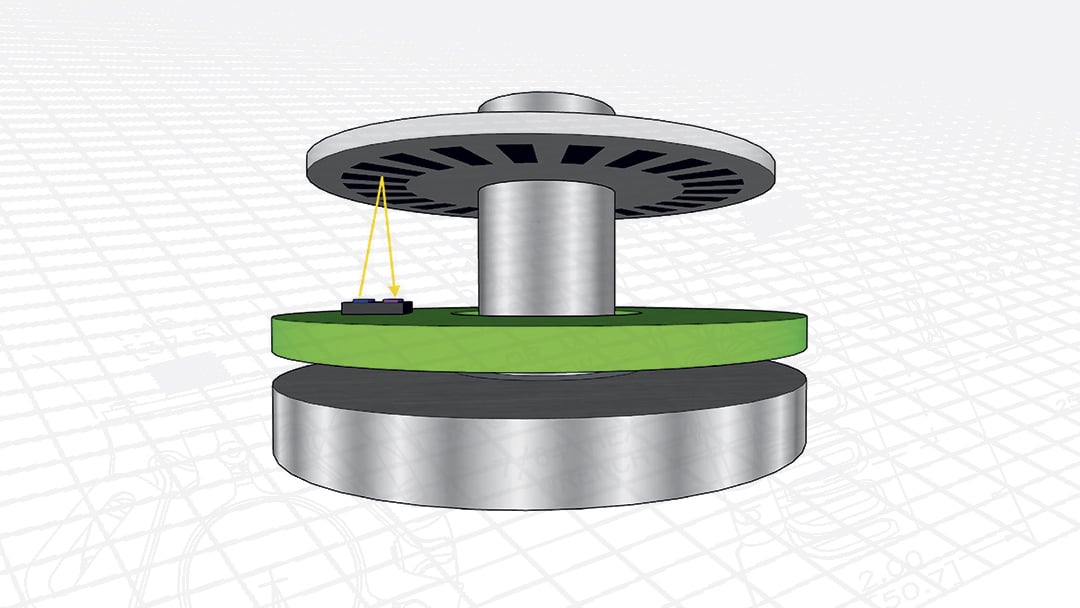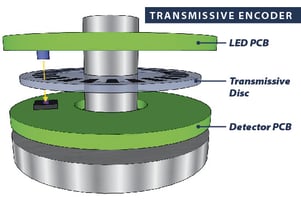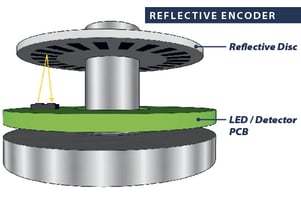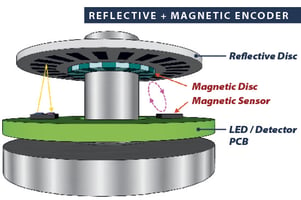Reflective encoders with magnetic sensing
For absolute encoder applications that require a persistent multi-turn count, EPC offers an additional magnetic sensing option. The magnetic sensing system keeps track of the coarse multi-turn count in parallel with the optical sensor. However, the magnetic sensor is a special low-power device that can operate efficiently from an external power source when the primary power source is removed (a battery or controller with a UPS backup may be used). While operating from battery, the magnetic sensing system will remember the last multi-turn count value and track any additional turns that occur until primary power is restored.




